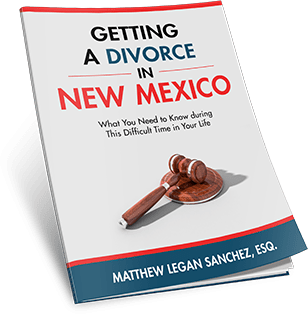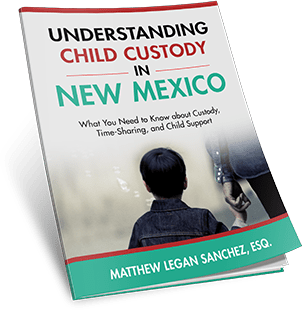Are you a parent looking to revoke or end kinship guardianship in New Mexico? If so, is the child guardian refusing to end guardianship? If you answered yes, then it is essential to understand the process of ending/revoking kinship guardianship in New Mexico.
“TEMPORARY” KINSHIP GUARDIANSHIP
Temporary Kinship guardianship is “temporary” in nature. For instance, Temporary kinship guardianship is intended to provide children with stable and consistent relationship with a kinship caregiver when the child’s parents are unable to do so.
Unlike adoption, Temporary kinship guardianship does not permanently terminate parental rights. In other words, a parent’s rights should be restored when the parent is willing and able to care for the child.
With that being said, the word “temporary” is often misleading. You see, a “temporary” order lasts “forever” when it goes unmodified. For instance, child legal guardianship remains valid until it is modified by either agreement – or through litigation/court order.
Parents often interpret the temporary nature of child’s legal guardianship as meaning “easily” changed. Unfortunately, this often is not the case.
DOES THE GUARDIAN OPPOSE/CONTEST ENDING THE GUARDIANSHIP?
Guardianship is usually established in one of two ways: (1) The parent(s) consent to guardianship, or (2) The court awards guardianship over the parent(s) objections.
In the second scenario, when parents contest legal guardianship, a Guardian Ad Litem (GAL) is appointed. The GAL is appointed to complete an investigation regarding the child’s best interests. The GAL makes recommendations, regarding the child’s best interests, after this investigation is complete. These recommendations will strongly influence whether the judge awards guardianship.
Once child’s legal guardianship is granted, the guardianship can be ended in one of two ways: (1) The guardian consents/agrees to end the guardianship, or (2) A parent must file a Motion to Revoke Guardianship.
Guardianship is easily terminated when the child guardian consents. Conversely, the child’s legal guardian refusing to end guardianship often creates a drawn-out process.
FILING A MOTION TO REVOKE LEGAL GUARDIANSHIP
Is your child’s guardian refusing to end the court appointed legal guardianship? If so, you must file a Motion to Revoke Guardianship. If not, the legal guardianship will continue until either:
- The child’s guardian agrees to end the guardianship;
- Your child emancipates; or
- A judge ends the child’s guardianship.
Any person, including a 14-year-old child, can request for legal guardianship to end. This process begins by filing the necessary Motion. This Motion must include a transition plan that proposes how to reintegrate the child into the parent’s home. The transition plan considers:
- The child’s age and development; and
- Any bond with the child’s legal guardian.
Guardianship ends when the evidence demonstrates that it is more likely than not that:
- A change in circumstances has occurred;
- The parent(s) are now capable of caring for the child; and
- The child is best served by revoking the guardianship.
When the evidence supports the facts above, the court can:
- Adopt the parent(s) or GAL’s proposed transition plan;
- Establish its own transition plan; or
- Order the parties to create a transition plan by mutual agreement.
APPEARING IN COURT – HOW DO I REVOKE OR END KINSHIP GUARDIANSHIP IN NEW MEXICO?
Is your child’s guardian refusing to end guardianship? If so, you must file the Motion discussed above. In doing so, an initial hearing is set to address the motion/request. At this hearing, the judge hears both sides of the story.
At this initial hearing, the child’s parents can explain why child’s legal guardianship should be terminated. In other words, the parents can explain why a change in circumstances has occurred, enabling the parent(s) to adequately care for the child.
Conversely, the child’s guardian can explain why guardianship should not be terminated. In this regard, the guardian may claim:
- Concerns regarding drug use;
- Domestic violence;
- CYFD involvement;
- Criminal arrests or criminal activity; or
- Any other claims that the parent(s) are not fit to care for the child.
In other words, at the initial hearing, the child’s guardian can claim that the parent(s) are still unfit to care for the child. In doing so, the child’s guardian claims that the child is best served by continued guardianship.
Guardian Ad Litem (GAL) INVOLVEMENT AND INVESTIGATION
Is your child’s guardian refusing to end/terminate guardianship? Is the guardian claiming that your child is best served by continuing guardianship? If so, the court will likely appoint a Guardian Ad Litem at the initial hearing.
Like establishing guardianship, the Guardian Ad Litem is appointed to investigate the child’s best interests. This investigation usually includes:
- Speaking with the parties;
- Talking with close family members;
- Interviewing the child’s counselor, teacher, or therapist;
- Conducting home visits; or
- Requesting any other information necessary to determine the child’s best interests.
At times, this process involves several steps. In turn, these steps can prolong the process. These steps include: (1) Appointing the GAL; (2) The GAL accepting the appointment; (3) Necessary documents being signed; and (4) Court ordered fees being paid.
In some cases, it takes considerable time to complete the four steps above. In other words, it can take significant time for the GAL to begin the necessary investigation. Additionally, it often takes the Guardian Ad Litem considerable time to complete the investigation.
GAL RECOMMENDATIONS – REVOKE/END KINSHIP GUARDIANSHIP IN NEW MEXICO
The court appointed GAL investigates the child’s best interests. After this investigation is complete, the Guardian Ad Litem provides the parties and court with recommendations regarding guardianship. After the process is complete, the parties can agree to the GAL’s recommendations. If so, guardianship ends.
In most cases, one side objects/contests the GAL’s recommendations. When either side objects to the GAL’s recommendations, a final hearing is set.
FINAL HEARING
At times, a final hearing is needed to determine whether guardianship should end. This final hearing provides both sides with the opportunity to support their position. In doing so, both sides can testify and present evidence that supports their position.
Additionally, the Guardian Ad Litem testifies about the investigation and ultimate recommendations. The GAL’s testimony/recommendations highly influence the court’s decision because the Guardian Ad Litem completed an investigation regarding the child’s best interests. In doing so, the GAL had the ability to speak with:
- The child:
- Child’s therapist, counselor, or other important third party; and
- Conduct home visits.
This outside information often cannot be introduced in court. In other words, the Guardian Ad Litem forms an opinion based on evidence/information that is either difficult or impossible to introduce in court, based on the rules of evidence. Moreover, the GAL is a court-appointed “arm of the court.” As such, the GAL’s recommendations are highly influential.
Based on these facts, usually the GAL’s recommendations impact the court’s final decision. In other words, the court probably will terminate guardianship if the Guardian Ad Litem recommends this result.
BEST LAWYER/ATTORNEY TO REVOKE/END KINSHIP GUARDIANSHIP IN NEW MEXICO
Are you looking to revoke/end kinship guardianship in New Mexico? For over a decade, Matthew Legan Sanchez has handled guardianship cases all across New Mexico. Sanchez’s experience includes: Albuquerque, Belen/Los Lunas, Rio Rancho, Santa Fe, Socorro, and Taos. Speak with the best child guardian attorney. Speak with (505) SANCHEZ.









